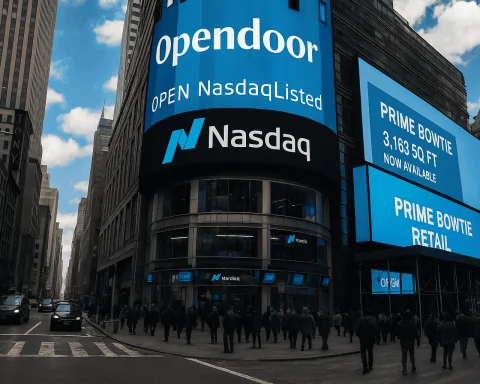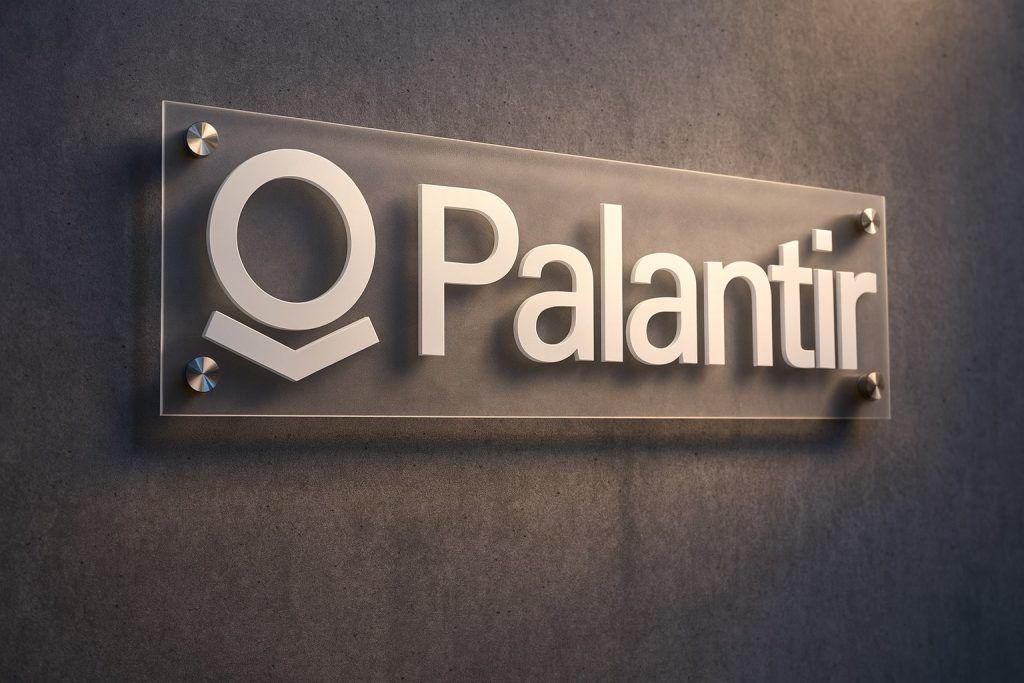As of November 22, 2025, Amazon.com Inc. (NASDAQ: AMZN) trades around $220–221 per share, after a sharp pullback from early‑November record highs near $255. [1]
That reversal has effectively erased Amazon’s 2025 gains according to recent MarketWatch/Dow Jones commentary, underlining just how volatile the stock has become in the late‑year AI shake‑out. [2]
With just weeks left in the year, investors are asking a simple question with a very complicated answer: where could Amazon stock go between now and the end of 2025, and what comes next?
Below is a news‑driven, data‑backed look at Amazon’s fundamentals, AI strategy, regulatory risks, and Wall Street forecasts into late‑2025, along with the key bullish and bearish scenarios that could shape AMZN’s trajectory.
Important: This article is for information and general commentary only and is not investment advice. Always do your own research or consult a licensed advisor before making investing decisions.
1. Where Amazon Stock Stands Heading Into Year‑End 2025
- Current price: about $220.69 at last close.
- Recent high: around $255 on November 3, 2025, after Amazon announced a $38 billion, seven‑year cloud deal with OpenAI that initially sent the stock to record levels. [3]
- Recent setback: subsequent selling pressure, AI‑spending worries and a broader tech pullback have taken the share price back toward the low‑$220s, with MarketWatch reporting that the stock’s year‑to‑date gains have effectively been wiped out. [4]
In other words, AMZN is sitting in a sentiment “reset” zone: still well above its 2024 lows, but far below where investors were willing to pay earlier this month for the same AI and cloud story. That disconnect between improving fundamentals and whipsawing sentiment is at the heart of every 2025 forecast.
2. Earnings Momentum: Q3 2025 Results and Q4 Outlook
Q3 2025 by the numbers
Amazon’s third quarter of 2025, reported on October 30, showed solid top‑line momentum and a mixed but improving profitability picture: [5]
- Net sales:
- Total revenue $180.2 billion, up 13% year‑on‑year.
- North America segment up 11%, International up 14% (10% in constant currency).
- AWS (cloud) revenue $33.0 billion, up 20% YoY – its fastest growth since 2022. [6]
- Operating income:
- $17.4 billion, flat versus Q3 2024 – but that figure includes two major charges:
- Excluding those items, management indicated underlying operating income would have been about $21.7 billion. [9]
- Net income:
- $21.2 billion vs. $15.3 billion a year ago, helped by a $9.5 billion pre‑tax gain from Amazon’s investment in AI start‑up Anthropic. [10]
Cash flow also told a nuanced story:
- Operating cash flow (TTM): up 16% to $130.7 billion over the last twelve months. [11]
- Free cash flow (TTM): down to $14.8 billion from $47.7 billion, as Amazon’s capital expenditures surged by more than $50 billion to build AI‑ready data centers and logistics infrastructure. [12]
Takeaway: The core business is growing and highly profitable, but almost all of that profit is being recycled into AI and cloud capacity rather than dropping straight to free cash flow.
Q4 2025 guidance
For the current quarter (Q4 2025), which runs through the crucial holiday season, Amazon has guided to: [13]
- Net sales: $206–213 billion, implying 10–13% year‑over‑year growth.
- Operating income: $21–26 billion, up from $21.2 billion in Q4 2024, assuming no additional major legal settlements or restructurings.
Analysts viewed that as an “upbeat but not euphoric” outlook: growth is healthy, AWS is re‑accelerating, and advertising continues to surge, but Amazon is explicitly baking massive AI capex into its margin guidance. [14]
3. AWS, AI and the OpenAI Deal: The New Core of the Amazon Story
AWS re‑accelerates
Amazon Web Services delivered 20% revenue growth in Q3, to $33 billion, and now accounts for roughly 60% of Amazon’s total operating income despite contributing less than a fifth of revenue. [15]
This re‑acceleration was driven by:
- A rebound in enterprise cloud demand after a period of optimization.
- Strong uptake of AI workloads — both training and inference.
- Amazon’s push into custom silicon (Trainium and Inferentia) to offer cheaper AI compute than pure GPU alternatives. [16]
The $38 billion OpenAI contract
In early November, Amazon and OpenAI announced a seven‑year, $38 billion cloud services deal. OpenAI will use AWS data centers and “hundreds of thousands” of Nvidia GPUs for training and running advanced AI models like ChatGPT, alongside specialized Amazon chips over time. [17]
For investors, this deal matters for several reasons:
- Proof of competitiveness: It signals that AWS remains a leading AI infrastructure provider despite Microsoft’s high‑profile partnership with OpenAI and Google’s rapid cloud growth. [18]
- Long‑term revenue visibility: The multi‑year commitment provides a large, relatively predictable revenue stream extending into 2026–2027.
- Capex justification: It helps explain why Amazon is comfortable pushing annual capex toward $125 billion in 2025, largely focused on AI and cloud infrastructure. [19]
Project Rainier and Anthropic
Separately, Amazon has completed Project Rainier, an AI supercomputer built on nearly 500,000 Trainium 2 chips, now used heavily by AI start‑up Anthropic to train its Claude models. Anthropic plans to scale usage to more than one million chips, underlining its deepening partnership with AWS and validating Amazon’s bet on its own silicon. [20]
This layering of OpenAI + Anthropic + internal AI workloads positions AWS as a central player in what could be a trillion‑dollar AI infrastructure cycle – but one that comes with enormous upfront costs and uncertain long‑term pricing power.
Funding the AI build‑out: $15B bond deal
To help pay for this build‑out, Amazon is tapping the bond market for the first time in three years, raising $15 billion in a multi‑tranche U.S. dollar debt sale. Reuters reports that proceeds may go toward acquisitions, capital expenditures and share buybacks, and that Amazon’s AI infrastructure spending is expected to reach about $125 billion this year, with more to come in 2026. [21]
That additional leverage is modest relative to Amazon’s scale, but it underlines how capital‑intensive the AI race has become.
4. Rufus, E‑Commerce and Advertising: Monetising AI Beyond the Cloud
While the headlines focus on cloud and chips, Amazon’s consumer‑facing AI is quietly reshaping retail and advertising economics.
Rufus: Amazon’s AI shopping assistant
- Rufus, Amazon’s generative‑AI shopping assistant, now powers conversational search and recommendations across a growing share of its marketplace.
- Amazon says the latest version of Rufus can search by activity or purpose, check prices, automatically add items to carts, track deal prices, and even parse handwritten grocery lists. [22]
- Recent reports show Rufus adoption growing triple‑digits year on year, with PYMNTS citing a 149% jump in users as Amazon rolls out new capabilities. [23]
Leaked internal planning documents, reported by Business Insider, suggest Amazon expects Rufus to contribute more than $700 million in operating profit in 2025 via increased shopping and ad monetization, with a projected $1.2 billion downstream impact by 2027 as features expand globally. [24]
Advertising: the quiet profit engine
In Q3 2025:
- Amazon’s advertising services revenue grew around 22–24% year‑on‑year to roughly $17.6–17.7 billion for the quarter. [25]
Layered on top of Prime and e‑commerce, this ad business:
- Benefits directly from better targeting via AI models and Rufus.
- Carries significantly higher margins than retail.
- Provides an incremental monetization channel as users spend more time in Amazon’s ecosystem.
Together, Rufus + advertising form a powerful flywheel: AI makes shopping more personal and efficient → customers convert more → ad impressions and returns improve → advertisers spend more at higher prices.
5. Regulatory and Legal Overhangs
No 2025 Amazon forecast is complete without addressing regulatory risk, which has escalated meaningfully this year.
Record‑setting FTC settlement over Prime
In September, Amazon agreed to a $2.5 billion settlement with the U.S. Federal Trade Commission over allegations that it used “dark patterns” to trick customers into enrolling in Prime and made cancellation too difficult. [26]
Key elements:
- $1.0 billion civil penalty – the largest in FTC history.
- $1.5 billion in refunds to customers, with automatic refunds of up to $51 for certain users between November 12 and December 24, 2025. [27]
- Requirements to clearly disclose subscription terms and simplify cancellation.
Financially, the settlement is a one‑time hit that Amazon can easily absorb, but it sets a precedent for more aggressive enforcement of consumer‑protection rules.
Ongoing U.S. antitrust case
The FTC’s separate antitrust lawsuit accusing Amazon of online retail monopoly practices – from allegedly punishing merchants who offer lower prices elsewhere to tying Prime visibility to ad spending – is still moving forward. A federal judge dismissed some claims in 2024 but allowed core allegations to proceed, with trial now pushed out to 2027. [28]
This creates a multi‑year headline risk: while structural remedies (like a breakup) are far from certain, any adverse ruling could weigh on valuation multiples.
EU Digital Markets Act: cloud in the crosshairs
In Europe, the European Commission has opened three market investigations into cloud computing services under the Digital Markets Act (DMA), including whether AWS should be designated a “gatekeeper” subject to stricter rules. [29]
Potential implications for Amazon:
- Restrictions on self‑preferencing and bundling of AWS services.
- Possible requirements around data portability and interoperability.
- Fines if Amazon is found to breach DMA provisions.
Regulatory risk does not negate the long‑term AWS and e‑commerce story, but it adds an overhang that may cap short‑term valuation upside, especially as fines and compliance costs stack up across regions.
6. Wall Street’s Amazon Stock Forecast Through Late‑2025
Despite the volatility and regulatory noise, Wall Street remains broadly bullish on AMZN.
Consensus ratings and price targets
Across multiple data providers, the picture is remarkably consistent: [30]
- Analyst rating:
- Around 45–60 analysts cover Amazon.
- The average rating is “Strong Buy”, with virtually no “Sell” recommendations.
- 12‑month price targets (various sources):
- StockAnalysis: 47 analysts, average target $280.47, implying ~27% upside from current levels; range $195–$335. [31]
- MarketBeat: ~62 analysts, average ~$295, implying 30–34% upside; range roughly $235–$360. [32]
- TipRanks: 43 analysts, average ~$295, high $340, low $250, implying about 35% upside from recent prices around $217. [33]
Recent target changes after Q3 earnings and the OpenAI deal include: [34]
- Mizuho lifting its target to $315.
- Wells Fargo nudging its target to $292.
- Canaccord Genuity increasing to $300.
- One downgrade (Rothschild & Co) from Strong Buy to Hold with a $250 target, still above the current price.
On average, then, analysts see Amazon as undervalued by roughly 25–35% over the next 12 months – a view that implicitly assumes continued AWS and advertising growth, manageable regulation and some normalization of AI capex.
Revenue and earnings forecasts
According to StockAnalysis’ aggregation of Wall Street models: [35]
- Revenue:
- 2024: $637.96 billion
- 2025 forecast: $726.75 billion (≈14% growth)
- 2026 forecast: $806.16 billion (≈11% growth)
- Earnings per share (EPS):
- 2024: $5.53
- 2025 forecast: $7.14 (~29% growth)
- 2026 forecast: $7.98 (~12% growth)
- Forward P/E:
- Around 31× 2025 EPS and ~28× 2026 EPS at current prices.
That means even after the recent pullback, AMZN still trades at a premium to the broader market, but cheaper than some AI‑heavy mega‑caps when adjusted for growth expectations.
7. Key Drivers for Amazon Stock Between Now and the End of 2025
With only weeks left in the year, price moves in AMZN will be driven less by hard financial data (Q4 results arrive in early 2026) and more by guidance, macro conditions and sentiment around AI economics.
Potential upside catalysts
- AWS AI momentum and re:Invent fallout
- Positive customer commentary, new AI product launches or additional large‑scale deals announced around AWS re:Invent and related events can reinforce the view that AWS is winning high‑value AI workloads. [36]
- Evidence that AI capex is paying off
- If Amazon can show that AI investments are leading to higher‑margin revenue (for example through advertising and Rufus‑driven conversions), investors may become more comfortable with temporarily depressed free cash flow. [37]
- Macro “risk‑on” environment
- Any signs from the Federal Reserve that rate cuts may come sooner in 2026 could boost long‑duration growth stocks like AMZN. (Fed commentary already suggests policy is “in the right place” but cautious on cuts.) [38]
- Share buyback expectations
- With a stronger balance sheet and a new $15B bond raise, markets may start to price in more aggressive share repurchases, especially if growth investments stabilize. [39]
Key downside risks
- “Destructive economics” of AI
- Morningstar/Dow Jones analysis warns that Amazon and Microsoft could suffer if AI infrastructure becomes a capital‑intensive business with rapidly falling prices, compressing returns on the massive capex now underway. [40]
- Free cash flow squeeze
- With free cash flow already down sharply and capex projected at around $125 billion in 2025, any slowdown in revenue growth could spook investors who expect cloud and AI to be inherently high‑margin. [41]
- Regulatory surprises
- Additional fines, stricter DMA rules on AWS, or adverse developments in the U.S. antitrust case could impact Amazon’s ability to bundle services or leverage its marketplace scale. [42]
- Valuation compression
- If the broader AI trade cools further, even solid earnings could be overshadowed by multiple compression as investors question how durable AI‑driven growth really is.
8. Scenario Thinking: How Could AMZN Trade by Year‑End 2025?
No model can reliably forecast where a stock will close on December 31, 2025, but based on today’s information, we can outline plausible short‑term scenarios rather than a single “price prediction.”
Bullish year‑end scenario (sentiment recovery)
In a positive case, the market:
- Re‑embraces AI infrastructure plays after digesting the capex shock.
- Reacts favorably to additional AWS AI wins or upbeat commentary from big customers like OpenAI and Anthropic. [43]
- Grows more comfortable with regulatory outcomes as the Prime settlement is absorbed and DMA proceedings move slowly. [44]
In this environment, AMZN retakes at least part of the early‑November rally, pushing the stock back toward the mid‑$230s or higher, narrowing the gap to the consensus 12‑month targets in the high‑$200s. (This is a qualitative scenario, not a price guarantee.)
Base case (range‑bound consolidation)
Here, investors remain:
- Confident in long‑term AWS and advertising growth, but
- Nervous about AI capex, regulatory pressure and macro uncertainty.
Under this scenario, Amazon’s stock consolidates in a broad trading range around current levels, with dips into the low‑$200s being met by buyers who accept near‑term volatility in exchange for long‑term AI and cloud exposure.
Bearish year‑end scenario (macro or AI shock)
In a more negative outcome, one or more of the following happens:
- A sharp macro shock or renewed rate‑hike fears hit growth stocks.
- Investors conclude AI infrastructure has become an arms race with poor returns on capital, leading to a derating of hyperscaler stocks. [45]
- Fresh regulatory actions create new uncertainties around AWS or the marketplace. [46]
In that case, AMZN could test lower support levels below $200, especially if broad indices also sell off.
Again, these are scenarios, not predictions – they illustrate how different combinations of AI economics, regulation and macro conditions could influence the stock over the next few weeks.
9. What This All Means for Investors Watching Amazon Into 2026
Summing up the news and data:
- Fundamentals:
- Revenue is growing low‑to‑mid teens, with AWS and advertising leading the charge.
- Underlying operating income is strong, but headline profits are distorted by one‑offs (FTC settlement, severance, Anthropic mark‑ups). [47]
- Strategy:
- Amazon is all‑in on AI, both as a cloud arms dealer (OpenAI, Anthropic) and as a consumer platform(Rufus, smarter retail, better ad targeting). [48]
- Risk:
- Capex and regulatory scrutiny are higher than at any point in Amazon’s history, creating genuine downside if AI returns disappoint or regulators clamp down more aggressively. [49]
- Valuation & Street view:
- Wall Street expects high‑single‑digit to low‑teens revenue growth and double‑digit EPS growth through 2026, and sees 25–35% upside from current prices over the next year, but from premium multiples that leave little room for execution missteps. [50]
For observers and long‑term investors alike, the core 2025–2026 question is less “Will AI matter?” and more:
Will Amazon’s AI and cloud investments generate enough high‑margin revenue to justify one of the biggest capex cycles in corporate history – after regulators, competition and macro risks are accounted for?
References
1. www.investopedia.com, 2. www.marketwatch.com, 3. www.investopedia.com, 4. www.marketwatch.com, 5. ir.aboutamazon.com, 6. s2.q4cdn.com, 7. ir.aboutamazon.com, 8. ir.aboutamazon.com, 9. ir.aboutamazon.com, 10. ir.aboutamazon.com, 11. ir.aboutamazon.com, 12. ir.aboutamazon.com, 13. www.reuters.com, 14. futurumgroup.com, 15. s2.q4cdn.com, 16. futurumgroup.com, 17. www.reuters.com, 18. www.reuters.com, 19. quartr.com, 20. www.barrons.com, 21. www.reuters.com, 22. www.aboutamazon.com, 23. www.pymnts.com, 24. www.businessinsider.com, 25. finance.yahoo.com, 26. www.ftc.gov, 27. www.ftc.gov, 28. www.ftc.gov, 29. www.reuters.com, 30. www.marketbeat.com, 31. stockanalysis.com, 32. www.marketbeat.com, 33. www.tipranks.com, 34. stockanalysis.com, 35. stockanalysis.com, 36. futurumgroup.com, 37. www.businessinsider.com, 38. www.reuters.com, 39. www.reuters.com, 40. www.morningstar.com, 41. ir.aboutamazon.com, 42. www.ft.com, 43. www.reuters.com, 44. apnews.com, 45. www.morningstar.com, 46. www.reuters.com, 47. ir.aboutamazon.com, 48. www.reuters.com, 49. quartr.com, 50. stockanalysis.com







